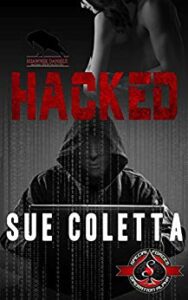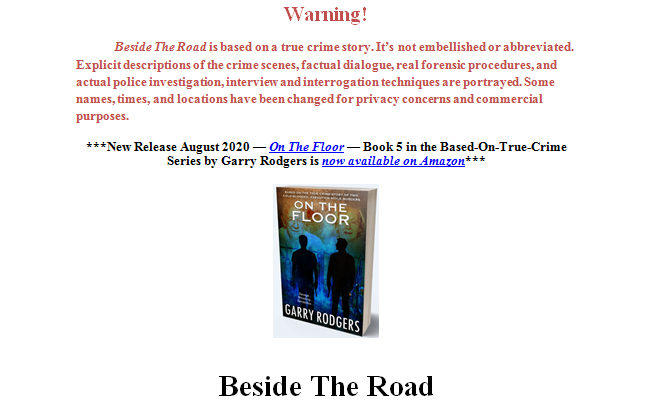By PJ Parrish
A good Tuesday morning to you all out there. Hope you are well and sane. Hope you are getting some writing done. Me, I’ve managed to grow a couple tomatoes. So it was fun to see someone else’s creative juices are flowing nicely. I’m referring to today’s First Page Critique. Let’s give it a read together and then we’ll discuss. Thanks, writer, for submitting.
Carrie’s Secret
I thought I would never see Carrie Genesen again and then she gets admitted to this hospital, where I work. I thought I would never see Carrie Genesen again and then she gets admitted to this hospital, where I work. WHERE I WORK!!! I knew she might talk and that would be a problem, a big problem.
But I am systematic. I am in control. And I will deal with it.
When she was admitted to Danton, Carrie was considered both a flight risk and a suicide risk so that day she was taken directly to the locked ward on the first floor. I had just stepped into the lobby as she came through the front door. She was flanked by an ambulance attendant on one side and a woman from the admitting office on the other, each holding an arm. Her parents, Noah and Marlene Genesen, followed close behind her. Carrie was older surely, about fifteen now, and a little taller with longer hair, but it was her. There was no doubt. I watched as the group turned to my left and entered the locked ward. None of them noticed me then, but I stopped cold.
The situation was urgent. Critical. Carrie would soon be in therapy and she could reveal the truth any time in the course of treatment. I could not let her say anything. Louise Ponte would probably be her therapist. She works with most of the kids. How long could Carrie keep the secret bottled up inside her here? It will tear her apart, I’m sure. A good shrink like Ponte will pull it out of her. And if Carrie said what she knows, would that fucking bitch of a psychiatrist believe her? Yes. Would her parents believe it? Definitely. I cannot take the risk.
So I had to adjust quickly and as soon as I had the opportunity that first afternoon, I confronted Carrie. Change-of-shift had just started so most of the staff were meeting behind the closed door to the nursing office. I went right to her room.
There wasn’t much time. I stood in her doorway, blocking her exit. She was sitting on her bed and she looked up at me. Her big brown eyes were unfocused. She was holding her bandaged arm and dressed in a tight red tank top and extremely short cut-off jeans. I could not help looking at her naked legs for an instant. Then I looked up to her face.
___________________________
There’s some nice things going on here. As we often say here at TKZ, it’s always good to start with a nifty action scene. As James always says, do first and explain later. In other words, show something intriguing going on and then, later, tell us what it meant. Notice that I put two words in red there?
Show, don’t tell.
I love the fact this writer opened with something happening. A person (unnamed and no gender identified…more on that later) is confronted in the hospital where they work by an old “friend.” Or maybe a foe. But at the very least, this person from the past has a secret that our narrator does not wish to be known. Nice set up!
But I think the writer missed a chance to ramp up the tension factor by telling us too much when, with a little restructuring, it could be shown and thus have more dramatic impact.
Plus, we have here a problem with tense. It wavers between past and present, and the overall style is an odd hybrid of action and reminiscence.
The first paragraph, for instance, is refracted through the narrator’s thoughts rather than pure action, and thus feels more like a memory. “I thought I would never see Carrie Genesen again and then she gets admitted to this hospital, where I work.” And with the capitalization and punctuation of the next line — WHERE I WORK!!! — it’s almost as if the writer subconsciously understood the first line was weak and she or he had to add caps and three exclamation marks to hit us over the head with the narrator’s intensity of emotion.
Might it not have been more effective to go right with action? I don’t know if Carrie, as she is being brought in, is fighting or half-comatose. So I am guessing here when I offer this suggested approach. I give it not as an attempt to rewrite this person’s style but to make a point about how, as an alternative, narration can be reshaped into a pure action scene.
The girl was screaming and kicking, her long dark hair flying around her face. The ambulance attendant had a hard grip on her right arm and a nurse jumped up from the desk to grab the girl’s right arm. I was standing by the admitting desk, and as they lurched past, the girl’s head shot up.
Her wild brown eyes locked on mine. It was only for a second, but in that moment, I saw her.
Carrie…
The only person in the world who knew what I had done.
Carrie’s head swung back and she gave me a questioning look that darkened into a glare. Then, with the wheeze of the ward’s door, she was gone.
Seconds later, a man and woman hurried in, not giving me a glance. Carrie’s parents. They didn’t recognize me, thank God.
My heart had stopped but now it was pounding. I took three deep breaths.
I am systematic. I am in control. And damn it, I will deal with this.
See the difference? Get the action moving first and then start explaining things. And when you do go into the character’s thoughts, make it powerful, pithy and put it in italics.
Because this is a mixture of direct action scene and remembered narration, there are other problems. The narrator, upon merely seeing Carrie come into the hospital, cannot possibly know — yet — that she is suicidal and a flight risk. She cannot know either that a certain doctor Louise Ponte will be assigned to her case. But these issues are easily resolved by continuing the action forward logically. For instance, the narrator, who apparently works at this facility, can immediately begin inquiries, maybe talk to the EMT when he comes back out? He could relate that she tried to kill herself. Show us, via action and dialogue, don’t tell us.
Suggestion: Use the first scene — maybe the whole first chapter — to flesh out your great set-up. Play up the narrator’s shock and the fear of what this might bring (why is Carrie here? What happened? Will she tell someone our terrible secret?) You’ve done a good job of creating a sense of peril, so why rush it? Build your tension! Then you move on, logically, to the narrator going to Carrie’s room and confronting her. That is probably worth a chapter all by itself. A third chapter could be a meeting with Dr. Ponte, wherein you can add some more background on why Carrie is there and why the narrator hates Ponte so much. Layers…it’s all about creating layers.
One problem many writers have is trying to figure out where to begin a chapter. This writer picked a great moment. But an equally vexing problem is figuring out where to END a scene or chapter. This is something this writer needs to work on. End one scene (in the lobby of hospital) and transition to the next scene (Carrie’s room).
Each scene and/or chapter needs to have its own beginning, middle and end. And you must DECIDE what the dramatic point of each individual scene is. For this story, the point of the first scene is to introduce the protagonist via their shock at seeing someone who harbors a bad secret. This opening scene must also have an ending that then connects (via a smooth transition) to the next scene.
A small thing but important: Don’t bother to introduce character names until it is important. We don’t need to clutter up this great action moment with Carrie’s parents’ names.
Ditto the shrink. Don’t give us Dr. Ponte’s name until she becomes an actual character in the action rather than in the narrator’s thoughts. Show us Dr. Ponte’s entrance, don’t tell us. I could see a great scene later, maybe chapter 3 or 4, where the narrator reads Carrie’s chart and finds out Dr. Ponte has been assigned to the case. Then maybe she goes and talks to the doctor? Show us, don’t tell us that Ponte is, ahem, a “fucking bitch.” Remember the great movie One Flew Over The Cuckoo’s Nest? We didn’t “meet” Nurse Ratched through Randall McMurphy’s thoughts. We met her on the ward, in all her terrible glory, interacting with the patients. Action is showing.
That’s my main points. I’d like to do a line edit to bring things into sharper focus.
I thought I would never see Carrie Genesen again and then she gets admitted to this hospital, where I work. WHERE I WORK!!! I knew she might talk and that would be a problem, a big problem.
But I am systematic. I am in control. And I will deal with it. This submission came to me with a couple graphs in italics, so that’s how I left it. But I see no need for it.
When she was admitted to Danton, This lapses into past tense and sounds like the narrator is remembering this. It disrupts the tension. Carrie was considered both a flight risk and a suicide risk The narrator has no way to know this. And “flight risk” is a legal term meaning a person is thought likely to leave the country before a trial or bail hearing. so that day she was taken directly to the locked ward on the first floor. I had just stepped into the lobby as she came through the front door. Again, the past tense construction “I had just” sounds like she’s recounting something that happened a while ago. She was flanked by an ambulance attendant on one side and a woman from the admitting office on the other, each holding an arm. Her parents, Noah and Marlene Genesen, followed close behind her. Carrie was older surely, about fifteen now, and a little taller with longer hair, but it was her. There was no doubt. I watched as the group turned to my left and entered the locked ward. None of them noticed me then, but I stopped cold.
The situation was urgent. Critical. This is a classic example of the writer TELLING us what the character feels rather than letting the emotions emerge through SHOWING the urgency. Carrie would soon be in therapy and she could reveal the truth any time in the course of treatment. I could not let her say anything. Louise Ponte would probably be her therapist. She works with most of the kids. How long could Carrie keep the secret bottled up inside her here? It will tear her apart, I’m sure. A good shrink like Ponte will pull it out of her. And if Carrie said what she knows, would that fucking bitch of a psychiatrist believe her? Yes. Would her parents believe it? Definitely. I cannot Again, we are shifting between past and present tense. Doesn’t work. take the risk.
So I had to adjust quickly and as soon as I had the opportunity that first afternoon, This is so confusing. Are we in the present day or is this character relating something that happened in the past? This construction suggests the latter. Which is not where we want to be opening a story. I confronted Carrie. Again, you’re telling us; show us. Change-of-shift had just started so most of the staff were meeting behind the closed door to the nursing office. I went right to her room.
There wasn’t much time. I stood in her doorway, blocking her exit. She is on suicide watch. Her door would be locked. She was sitting on her bed and she looked up at me. Her big brown eyes were unfocused. She was holding her bandaged arm and dressed in a tight red tank top and extremely short cut-off jeans. I could not help looking at her naked legs for an instant. Then I looked up to her face. She already looked at her face, her unfocused brown eyes specifically.
Okay, this is important. Whenever you describe something, be it a room as a character enters, or seeing a person, always start with what is first-impression logical and move on to other details from there. What you would logically see — IN ORDER OF YOUR SENSES PROCESSING THINGS?
Carrie was slumped on her bed. Her lank hair covered her face, and she was rubbing her bandaged wrist. For the first time, I noticed what she was wearing — a tight red tank top and short cut-off jeans. I was staring at her long legs when Carrie looked up.
See the difference in the order of the description? It has to be logical. And use it to up the tension. Also: Never let a chance go by in your description to make it specific and thus salient to character. You said she was “sitting on the bed.” Is she slumped? Curled in a fetal ball? Sprawled? Each suggests something specific about character and mood. And the bandage on her arm. What kind of bandage and where it is? A wrist gauze suggests a slit wrist and is a way for the narrator to get this knowledge of a suicide attempt via showing instead of telling.
One last thing. We don’t known a thing about the narrator and presumptive protagonist of this story. When working in first person, it’s hard to get in names and such. (Forget description in the early going!). But it becomes annoying, the longer your scene goes on, for the reader not to have a clue who they are listening to. We don’t even know the sex of our narrator. Such “busy work” can be dropped easily in dialogue, maybe as the narrator stands there in shock at seeing Carrie, someone calls out, “Dr. Rogers, are you okay? Jane? Jane, did you hear me?” A simple “trick” like this would give us A.) the protag’s sex B.) name C.) profession.
Okay, that’s about it. Again, I want to give kudos to the writer for picking a good dramatic moment to drop us into the story. I really like the set-up, a teenager from the protag’s past harbors a bad secret that terrifies the protag enough to make them spring into action.
But, dear writer, you need to slow down a tad and give more thought to the structure of each individual scene and/or chapter and to hone in on the dramatic point of each. Good luck and thanks for letting us share your work.





















